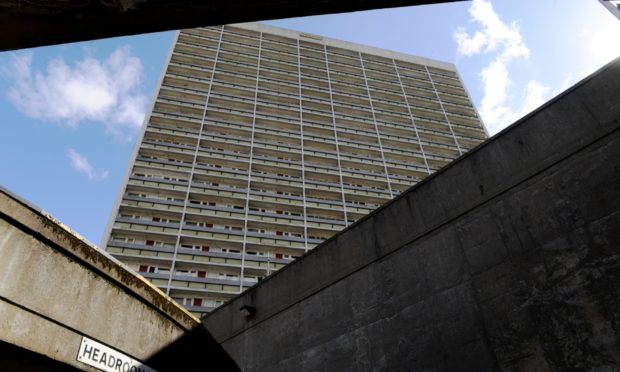Residents of eight listed Aberdeen high rises have, for the first time, had it spelled out to them what they now can and cannot do to their own homes.
Council officials have developed a ‘traffic light’ system to keep residents within the law after Historic Environment Scotland earlier this year gave its top A-listing to the post-war multi-storeys in the city centre.
It affords the buildings the same protected status as Marischal Square and the Music Hall.
Council chiefs are still trying to convince the government’s heritage quango that Gilcomstoun Land, Virginia Court, Marischal Court, Thistle Court, Hutcheon Court, Greig Court, Porthill Court and Seamount Court are not of special architectural or historic importance.
Their appeal may, however, be hurt by the recent use of the latter two, in the Gallowgate, in the production of Hollywood Soviet-era film Tetris.
A multi-storey car park in West North Street and shops adjacent to the two Gallowgate blocks have also been listed.
The council’s guide, yet to be approved for public consultation, confirms predicted difficulties in making homes more energy efficient and bringing in improvements after the Grenfell Tower tragedy could prove correct.
A green light has been given to decorate and modernise homes – including replacing like-for-like windows, external doors, shop fronts, external paint and utilities such as boilers, plumbing and electrics in single properties.
But planners are urging advice is taken before work under the amber banner is carried out.
That covers removing load-bearing walls, changing the materials or opening mechanisms on windows and exterior doors, insulating homes, fitting access ramps, or upgrading the heating, plumbing or electrics in multiple properties.
Caution is also urged before the council replaces, without consent, CCTV cameras, lights, signage and satellite dishes or repaves paths.
Furthermore, red-listed works – where listed building consent and planning permission will definitely be required – include individual satellite dish installation, alterations to balconies, council-led replacement of many windows and doors made from different materials, cladding the towers, altering the roof, making “comprehensive” fire safety improvements or demolition.
Chief strategic place planning officer Gale Beattie said the document was particularly important, “given the absence of any national guidance on this topic”.
The local authority remains the majority owner of the properties in the multi-storeys, though there are owner-occupiers too.
